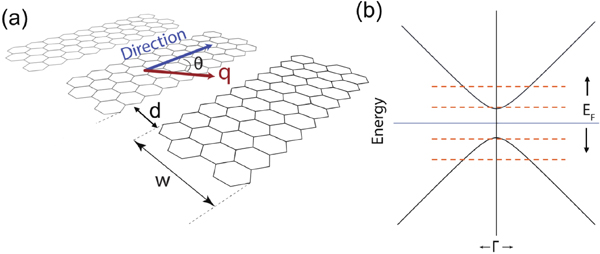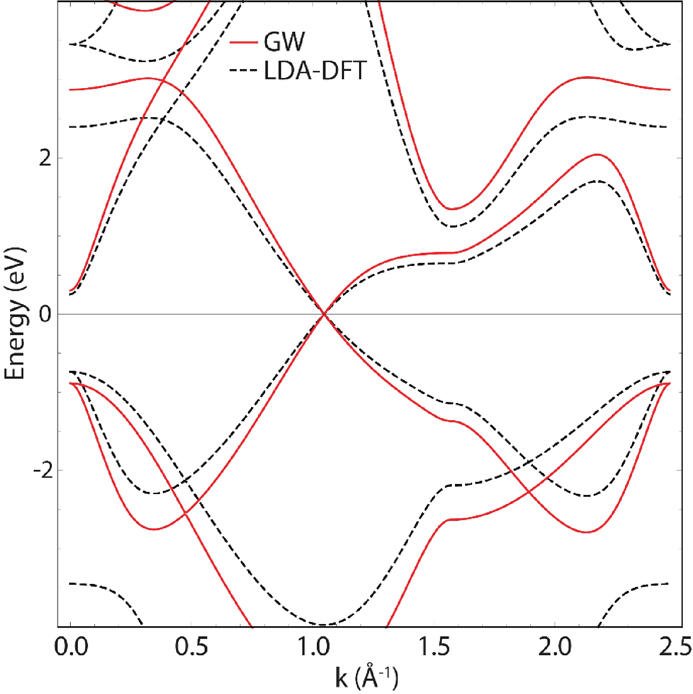Talia Tene, Marco Guevara, Gabriela Tubon-Usca, Oswaldo Villacrés Cáceres, Gabriel Moreano, Cristian Vacacela Gomez, Stefano Bellucci. THz plasmonics and electronics in germanene nanostrips[J]. Journal of Semiconductors, 2023, 44(10): 102001
Search by keywords or author
- Journal of Semiconductors
- Vol. 44, Issue 10, 102001 (2023)

Fig. 1. (Color online) (a) Schematic representation of GeNSs. (b) Hypothetical low-energy band structure of GeNSs, showing the modulation of charge carrier density by shifting the Fermi level (orange dashed lines).

Fig. 2. (Color online) Full-electron band structure of freestanding germanene along the
Fig. 3. (Color online) (a) Low-energy band structure of freestanding germanene in the vicinity of the Fermi level and K-point. The energy bands
Fig. 4. (Color online) Variation of bandgap in (a) narrow GeNSs (10−50 nm wide) and (b) wide GeNSs (100−500 nm wide). The estimated bandgaps via GW-group velocity are compared with those values via DFT-group velocity.
Fig. 5. (Color online) Electron band structure and DOS of GeNSs with widths of (a), (b) 100 nm and (c), (d) 500 nm. The smoothed curve of the histogram is shown by the red line.
Fig. 6. (Color online) The system under study corresponds to a 100 nm wide nanostrip (
Fig. 7. (Color online) (a) Dispersion of the plasmon frequency-momentum as a function of the wave vector, considering different values of
Fig. 8. (Color online) (a) Dispersion of the plasmon frequency-momentum as a function of the wave vector, considering different values of
Fig. 9. (Color online) (a) Dispersion of the plasmon frequency-momentum as a function of the wave vector (
|
Table 0. The estimated group velocity of suspended germanene and graphene by GW and DFT calculations compared with the available experimental value.
|
Table 0. Estimated values of electron relaxation rate (
|
Table 0. Variation of carrier density and Fermi level by adjusting the distance between GeNSs.
|
Table 0. Bandgap values and effective electron masses of chosen GeNSs (see Fig. 3 (b)). It is pointed out that

Set citation alerts for the article
Please enter your email address



